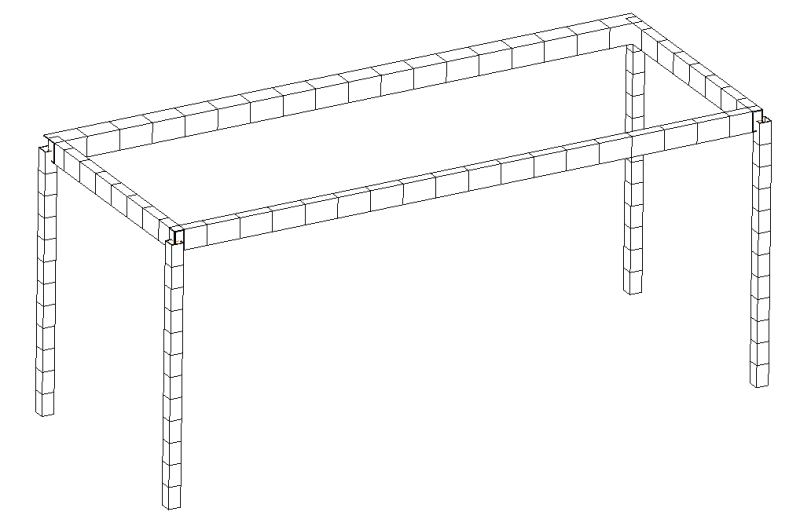Hello everybody
I asked this question some time ago but now the project has "woken up" again and now I know the locations.
It concerns a steel frame "box", four beams forming a rectangular floor (2.5 m x 6.0 m), four corner columns (total height 2.8 m) and four additional beams forming the roof. There are some additional secondary beams in the floor. Everything in RHS sections.
It's an exhibition monter with glass walls and there are a few of these "boxes" designed for the European market, using Eurocode etc.
The governing criteria has, so far, been overturning of the empty box for windload. One possible load situation is people and a few tables and chairs, so basically empty.
Now the client wants to do this in the US. Florida, high windloads, and California, possible earthquakes. I hope that somebody might be able to give me some ideas regarding requirements.
The duration for the exhibition is max two weeks. It's mobile but for each location we have max two weeks.
California, is earthquakes even valid? Especially for a one storey building. I am not worried about the forces but I don't think the current design will meet requirements regarding detailing, ductility and testing.
Florida, huge windloads. It is designed for high windloads by European standards, but Florida is worse. But a hurricane does not appear just like that. Would it be allowed to assume that we can ancor the "box" to the ground or even move it indoors if a hurricane warning should happen?
Is it completely out of the questing to have calculations according the Eurocode accepted for this situation? I have actually used FEM-analysis and modelled the sections with shell elements for certain reasons.
I have read in the IBC that for this type of sructure a permit from a building official is required. If anybody could perhaps share some info or experience regarding what that means for this type of structure? It would be very much appreciated.
Input is, as always, appreciated
Thomas
I asked this question some time ago but now the project has "woken up" again and now I know the locations.
It concerns a steel frame "box", four beams forming a rectangular floor (2.5 m x 6.0 m), four corner columns (total height 2.8 m) and four additional beams forming the roof. There are some additional secondary beams in the floor. Everything in RHS sections.
It's an exhibition monter with glass walls and there are a few of these "boxes" designed for the European market, using Eurocode etc.
The governing criteria has, so far, been overturning of the empty box for windload. One possible load situation is people and a few tables and chairs, so basically empty.
Now the client wants to do this in the US. Florida, high windloads, and California, possible earthquakes. I hope that somebody might be able to give me some ideas regarding requirements.
The duration for the exhibition is max two weeks. It's mobile but for each location we have max two weeks.
California, is earthquakes even valid? Especially for a one storey building. I am not worried about the forces but I don't think the current design will meet requirements regarding detailing, ductility and testing.
Florida, huge windloads. It is designed for high windloads by European standards, but Florida is worse. But a hurricane does not appear just like that. Would it be allowed to assume that we can ancor the "box" to the ground or even move it indoors if a hurricane warning should happen?
Is it completely out of the questing to have calculations according the Eurocode accepted for this situation? I have actually used FEM-analysis and modelled the sections with shell elements for certain reasons.
I have read in the IBC that for this type of sructure a permit from a building official is required. If anybody could perhaps share some info or experience regarding what that means for this type of structure? It would be very much appreciated.
Input is, as always, appreciated
Thomas

